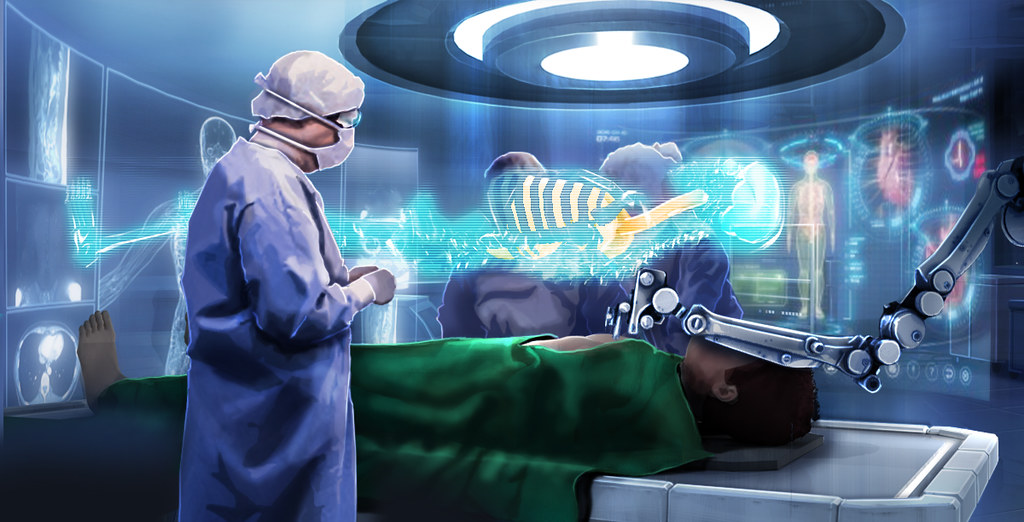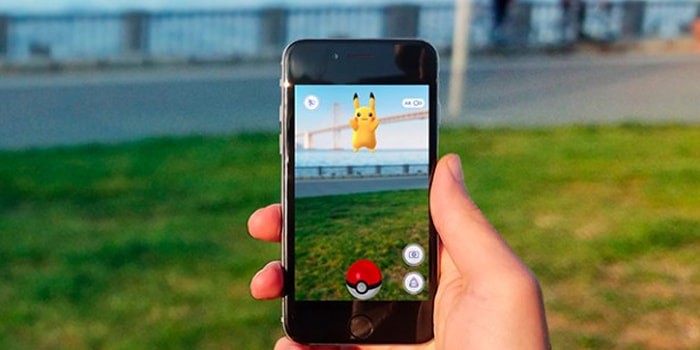Augmented Reality
Overview - What is AR?
Augmented Reality, or AR, is a technology that combines real-life surroundings with digitally generated content. The generated content is usually designed to improve the viewer's conception of their surroundings by providing supplementary information about the surroundings. Augmented Reality changes in real time, and updates its information with every change of view or setting. AR technology adapts to all perspectives of reality, through all points of view, while normal graphics generated on the computer or TV only adapt to one angle and one situation.
Augmented Reality (AR) is usually confused with Virtual Reality (VR). VR completely immerses the user in a world different than reality, while AR imposes digital content on reality.

Benefits
The main benefit of Augmented Reality is that it further improves our perception and understanding of the world around us. From entertainment to medical to military uses, AR brings us useful information that is relevant to the present, updated in real time. Information that one would normally need to consult others or search the internet to find would be available in plain view and would complement reality in an effective and useful manner.
Unlike virtual reality and our current 2D displays, Augmented Reality does not draw the user's focus away from the world around us. Rather, it integrates digital information into the user's surroundings. This is increasingly important as more and more people rely on looking down at small screens for information on a day-to-day basis. AR provides an opportunity to interact with existing technologies and information without the cost of situational awareness or convenience.

Cons of Augmented Reality
While Augmented Reality greatly enhances the quality of technology in a range of fields, it also has a downside.
Firstly, the fascination of new AR technology can often become a distraction to users, especially kids and teenagers. This is especially prevalent in recreational AR uses, such as Snapchat filters or Pokemon GO. Users often become immersed in the modified reality, as it can be more advanced and interesting than normal reality. This can lead to decreased interaction with the outside world.
Additionally, certain health issues can be traced back to overuse of AR. Prolonged use of the technology can lead to eye and head aches, as is the same with overuse of any screen based technology.
Alongside new ways to access and display information, AR can also provide new ways for malicious hackers to intercept this information. The manner in which AR information is displayed, whether by projection or by digital modification of a camera input, could prove susceptible to new kinds of exploits.

Uses of Augmented Reality
With recent technological advancements in a number of fields, there is an increasingly large scope of usage for Augmented Reality. Different usages are given below.
Commercial and Consumer Use
Augmented Reality development kits are currently on the market. Using these kits, businesses can develop applications for Augmented Reality and sell them to other AR users. These apps have a wide range of uses and usually manipulate different sets of real data. As consumer augmented reality increases in popularity, AR will slowly make its way into the office as well. Especially in the fields of engineering and manufacturing, interactive AR can provide new ways to share and build new ideas.

An example of this would be the Meta AR Development Kit, which includes a headset on which developers can build and use AR apps.
Military Uses
Heads Up Display is a commonly used display that is cast onto the windshield of fighter planes and displays information such as altitude and airspeed. This is so that the pilot can look straight ahead and see everything needed for reaching destinations and/or attacks.


This Head Mounted Display is a display cast on a wearable platform that is used by ground troops so they can see enemy location and other statistics.
Medical Uses
Using AR, medical students can view live information with MRI or Xray scans, and can perform and practice surgery with added precision and sensory input. Doctors can also view information particular to their patients in real time.

Recreational Uses
Augmented reality has many recreational uses in video games and social media. These uses highly increased the number of users of AR, and broadened the age range of users to include kids and teenagers as well. Augmented Reality is also used in the popular mobile game Pokémon GO. In this game, the regular camera of the user’s phone is used to view surroundings, and different digital creatures are overlayed onto the camera view. The user has to walk around and “capture” these creatures. The game uses AR to overlay creatures onto the camera view and to manipulate these creatures with every change of reality.


Augmented Reality is also used in the popular social media platform Snapchat. The camera features “lenses” that use facial recognition software to overlay and modify different facial features on the user’s face. These lenses also add different particle effects in the user’s background. The facial overlays can change depending on the position of the user’s eyebrows or the shape of their mouth.
Navigation
A new AR technology is the windshield GPS, where navigation and speed content is displayed directly on the windshield in plain view of the driver. This avoids distractions, as the driver no longer has to alternate between viewing the GPS and the windshield.
